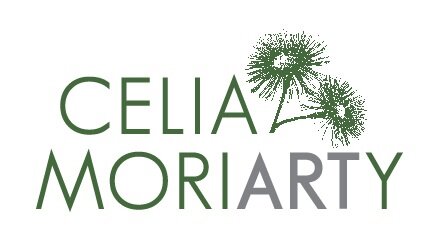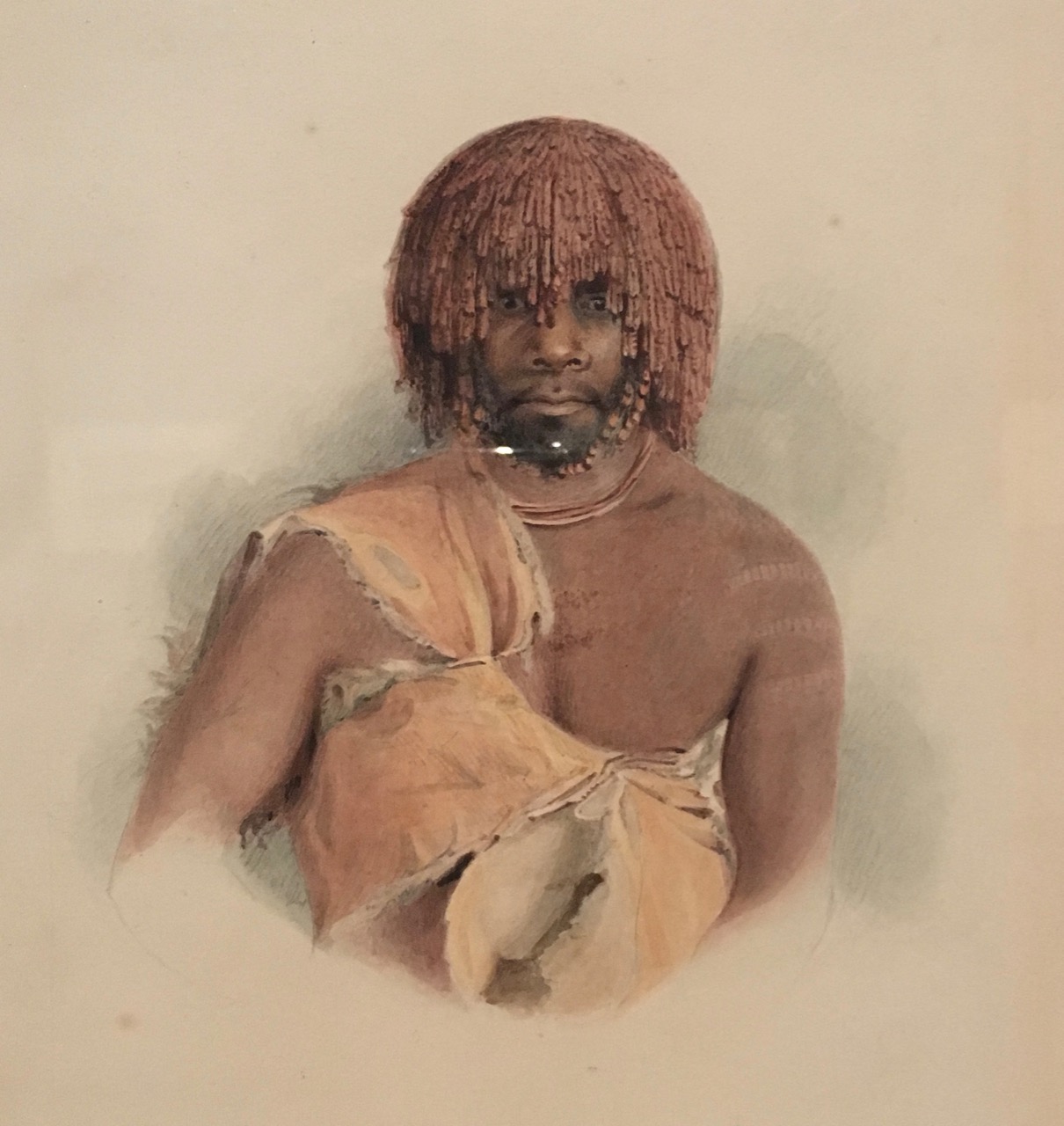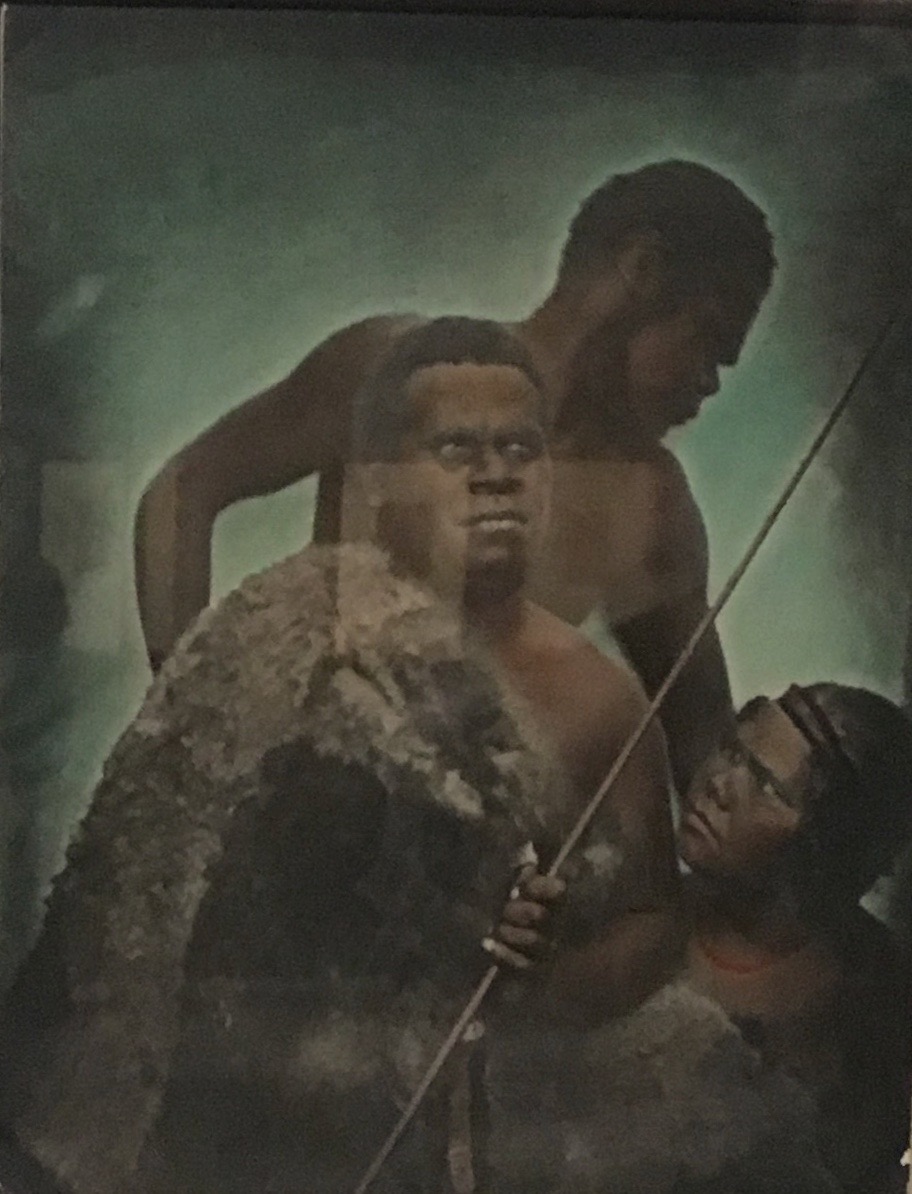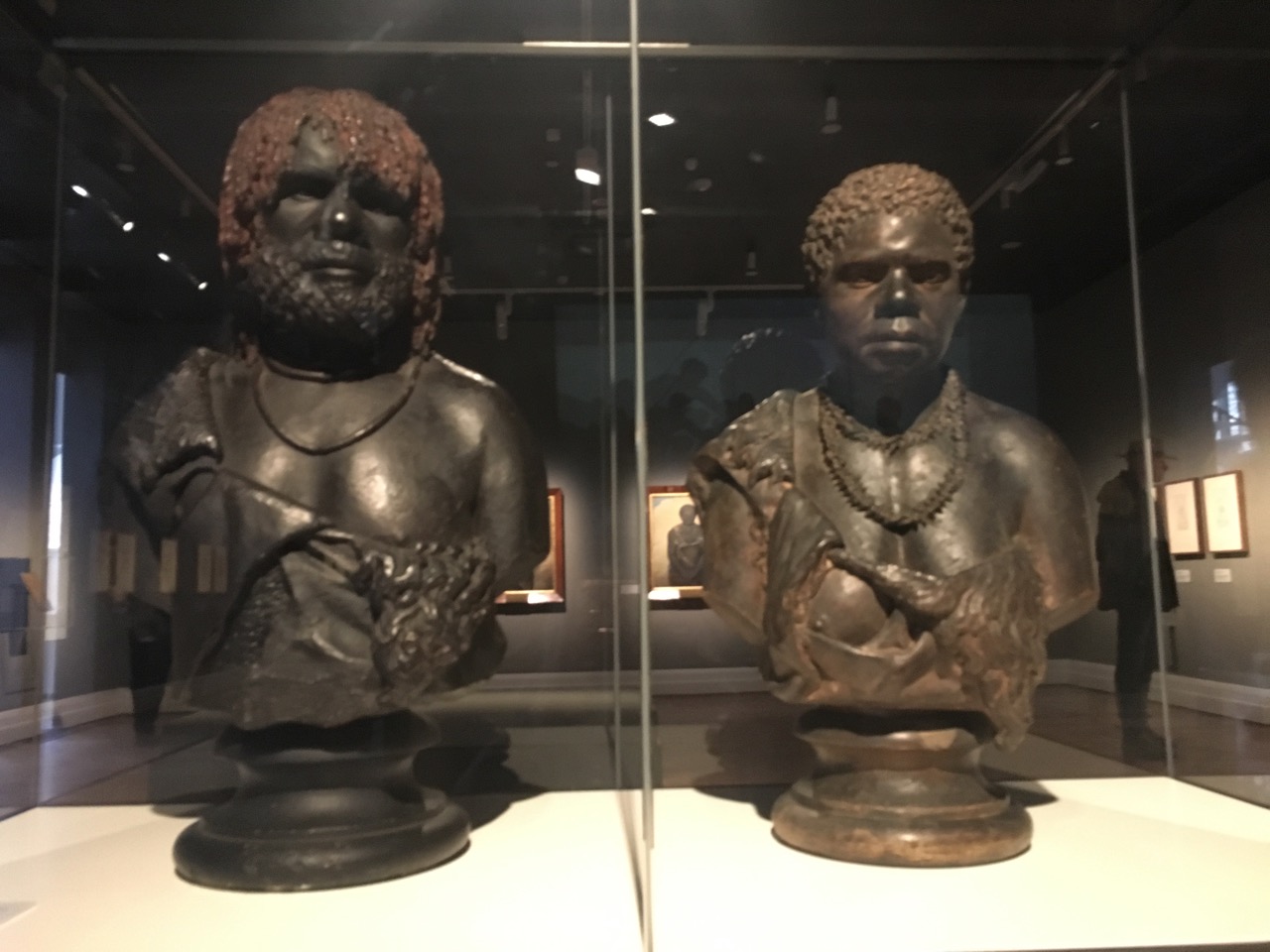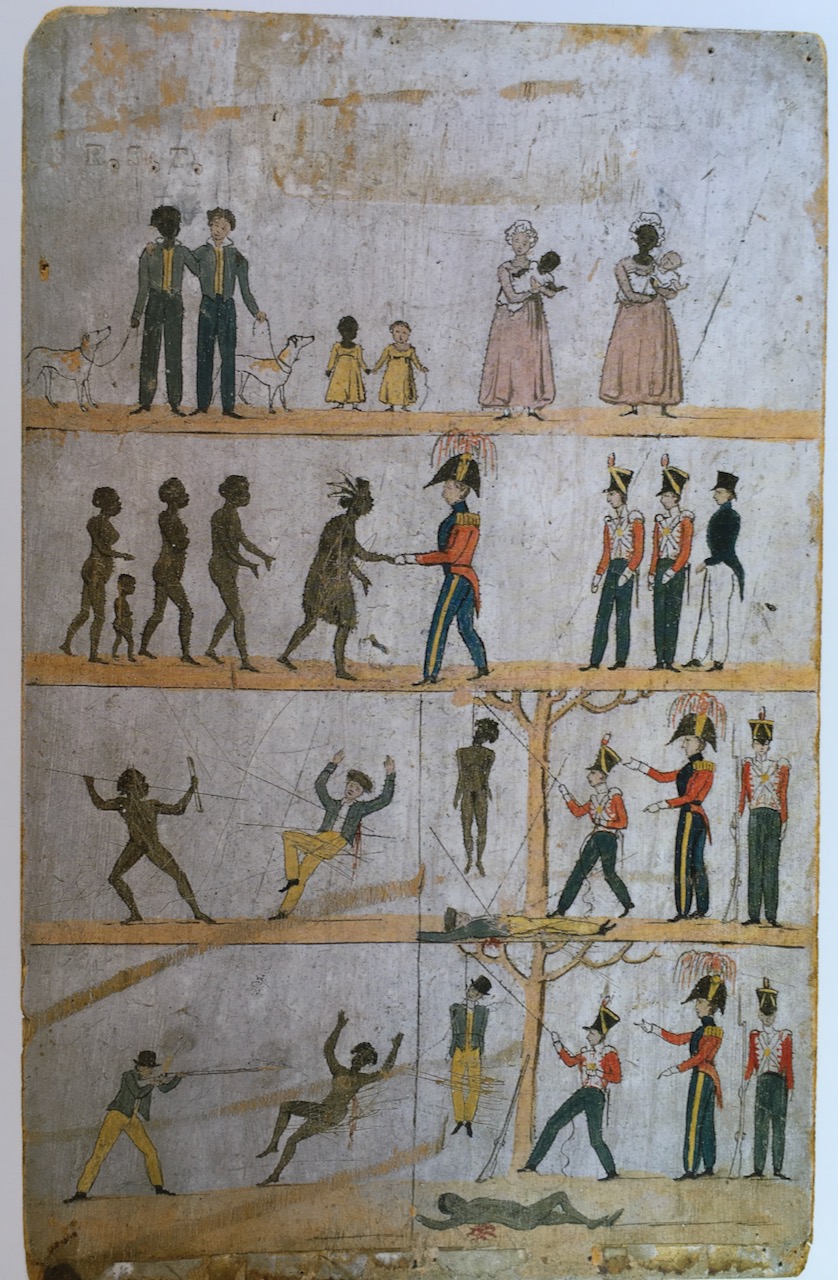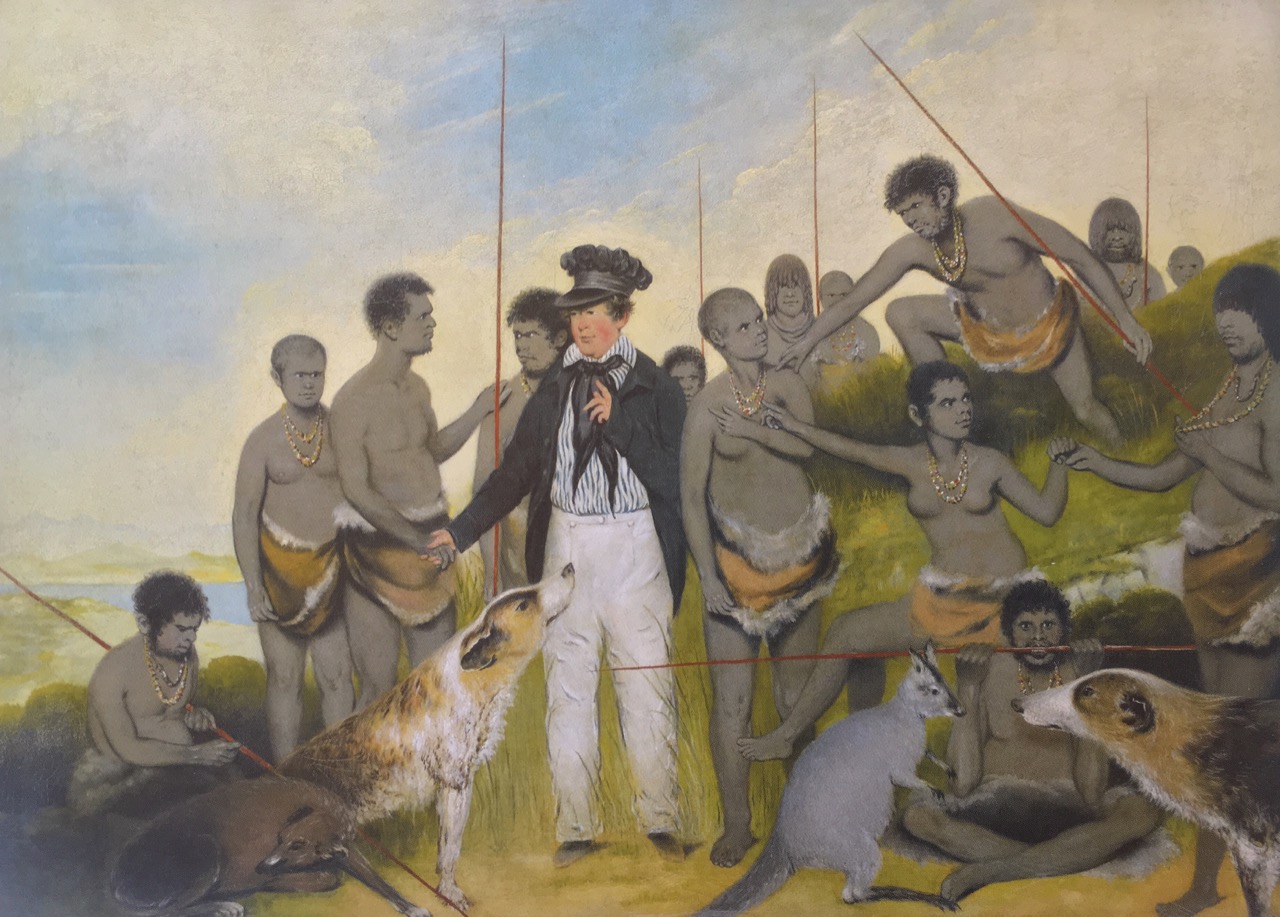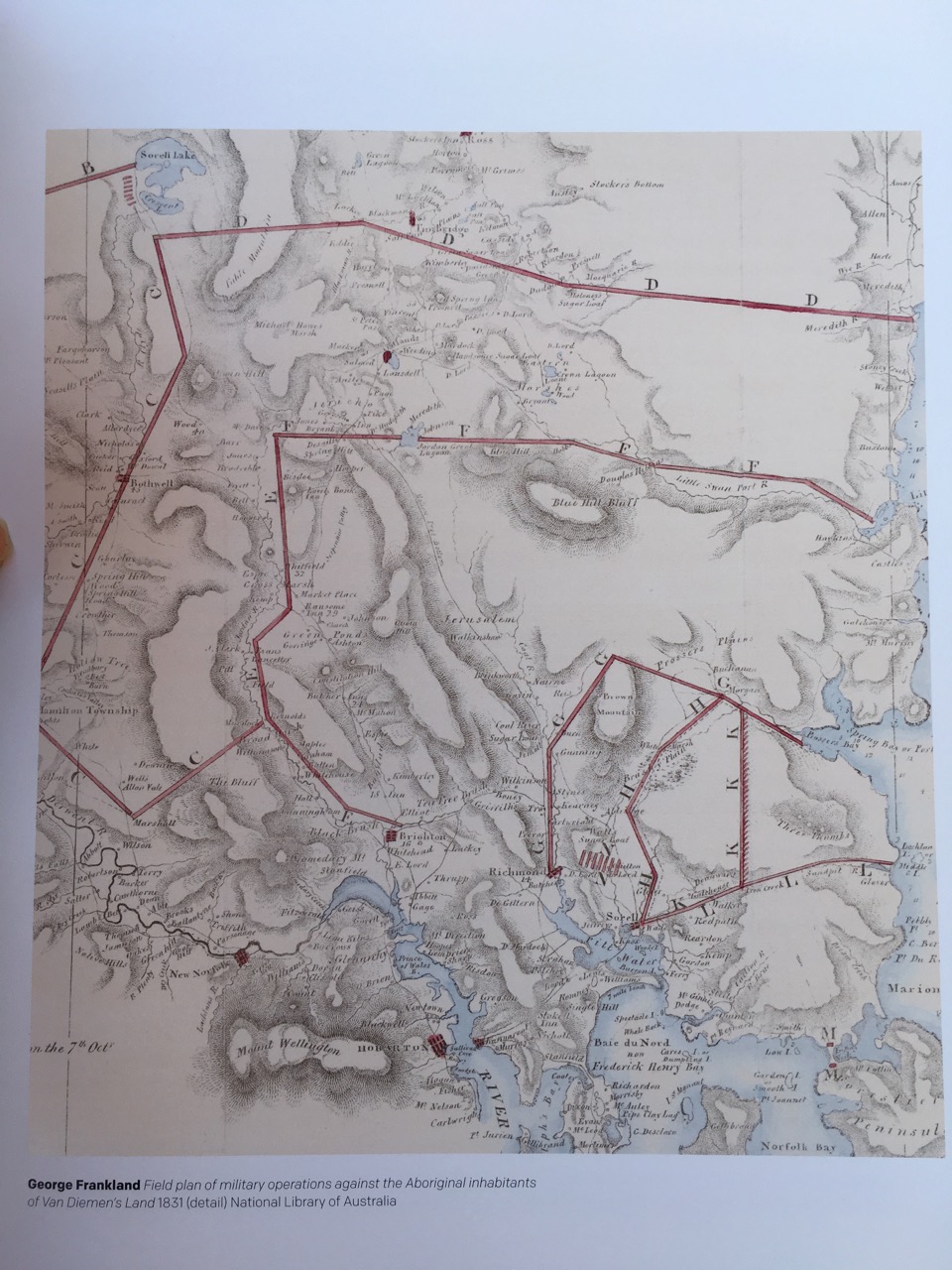The Conciliation
While in residence at ‘All that We Are’ in Hobart I went to the Hobart Gallery and Museum’s “The National Picture - The Art of Tasmania’s black War”. The exhibition is built around Benjamin Duterrau’s painting The Conciliation – showing George Robinson meeting with the Palawa - local Aboriginals, to end resistance and accept government protection. The Museum of Australian Democracy at Old Parliament house recognises this painting as one of Australia’s founding documents. This “Friendly Mission” by Robinson and the Palawa people Woorady, Trukanini and others, who travelled the island on a Christian mission seeking out tribes who were resisting colonial expansion. They were successful in persuading hostile tribes to give in and accept government protection – giving up their land and moving to Flinders island (a move thought to be temporary). This ended the Black War.
With this exhibition is the work of Thomas Bock who was commissioned to paint 14 local Aboriginals. Of course having just spent a year painting portraits of Aboriginal people today who I see as champions of their culture I was fascinated. What was going on when Bock an ex convict painted the portraits?
“The national picture: the art of Tasmania’s Black War places Duterrau and Robinson at the centre of the memorialisation of the ‘conciliation phase’ of Tasmanian colonial history, which did not represent a fresh start but rather, signalled the beginning of the end.”
Paintings from this period of decimation of the local inhabitants by British forces and settlers show the gross discrepancy between rhetoric and reality. The locals both call for land at any cost and others are appalled by the measures taken. As you can see from the timeline I have constructed (in order to get it straight in my head) things were out of control and high ideals and land grabbing were at constant odds. What really grabbed my attention were the Proclamation boards showing equal treatment for black or white and an integrated society - how could these boards have been hung in public at the same time as the black war?
Van Diemans Land -Tasmania was settled in 1803. By mid 1820’s settlers and land grants have increased and conflict between settlers and original inhabitants is spiralling out of control.
1828 Lieutenant-Govenor George Arthur publishes a Proclamation in The Hobart Town Courier which begins: “Whereas, at and since the primary Settlement of this Colony, various acts of aggression, violence and cruelty have been, from different causes, committed on the Aboriginal Inhabitants on the Island by Subjects of His Majesty…”
The Black War
1828 in April the government declares all Aboriginals who entered the settled districts as criminals and could be killed with impunity. The settled districts were not marked. By November this escalated to martial law – effectively declaring war on the aboriginal people anywhere.
1830 the Black Line is staged - 2,200 men at a cost of half the annual budget of the colony 30,000 pounds were to drive the Aboriginal population from settled districts to Forrestier Peninsula and then to be sent offshore. Only 2 people were captured. The Aboriginal population of 6,000 at settlement was now down to a few hundred - They still resist.
1831 Field Map of the military operation of the black line (above) is published in England. Showing belief that the English straight line could dominate even topography - the militia groups were undisciplined and didn’t move in a coordinated line.
Concurrently - The “Friendly Mission”
1828 Robinson is appointed to convert a ration station on Bruny Island as a mission to civilise the Aboriginal people. It was a failure with many dying from disease. Despite this, Robinson convinces Arthur to support his more ambitious plan to move Aboriginal tribes in stages to Flinders Island for two years while things settle and then bring them back.
1829 Frankland the surveyor who in his travels noted Aboriginal paintings on trees and in huts (including pictures of colonists) had the idea of using this pictorial method to influence both Indigenous and settlers (who were often illiterate). The picture boards refer to L-Gov Arthur’s proclamation and show black and white families arm in arm, black women holding white babies and white women holding black babies, and that punishment for killing was killing regardless of skin. A story of integration.
1830 L-Gov Arthur offers ‘a handsome reward to any individual who shall effect a successful intercourse with any tribe.’
1830 L-Gov Arthur agrees to fund Robinsons plan of conciliation and taking Aboriginal tribes to Flinders Island
1831 Robinson meets with the Big River mob (a group of numerous clans who have held on to living on the land) to effect their surrender. The Oyster Bay mob are also brought in.
Between 1831-5 Robinson commissions Thomas Bock to paint 14 Tasmanian Aboriginal people – who had been brought to Hobart in Robinsons conciliation project. (These paintings are currently on loan from the British Museum.)
1833-4 Duterrau paints large portraits of Aboriginal people in oils.
1840 Duterrau’s painting of ‘The Conciliation’. He referred to this as preparation for a later painting ‘The National Portrait’ that he apparently sold to a scotsman but no image of it exists.
1835-1840 Robinson is heralded as the conciliator or the pacificator and awarded trophies and painted by many artists
Despite killings for 25 years, the Black War, disease and maltreatment the Aboriginal people of Tasmania would not give in – they fought a bloody war for their land and their people. The conciliation meetings, commissioned and paid for by the government of the day represent a treaty to end that war. Neither the war nor the treaty are recognised in our history. The War Memorial in Canberra should hold this picture.
Robinson later came under criticism for duping the Palawa – they were never returned to the mainland but died of disease and starvation. Although many Aboriginals had been gathered up from the sealer’s islands during the ‘Friendly Mission’, fortunately some were not.
